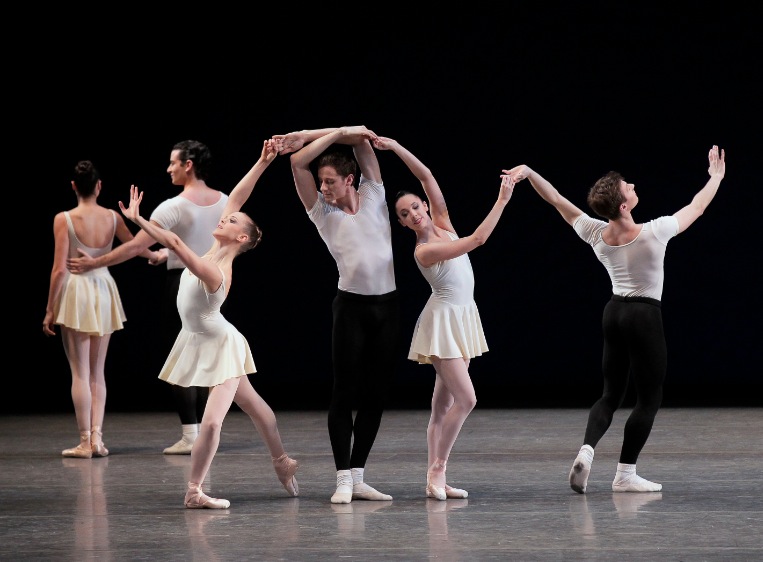Ballet lovers (and dancers) know it well: the Nutcracker threshold, that moment in early January when another visit to the Land of Sweets might kill you. But New Yorkers are lucky: They have New York City Ballet's winter season to revive them from the sugar crash. You could sense the collective relief in the David H. Koch Theater on Tuesday, at the company's season-opening performance, a program of four ballets by George Balanchine.
NYCB, ever polite, even found a way to ease the Nutcracker transition. The set for the evening's first ballet, The Steadfast Tin Soldier, is a familiar Victorian living room that includes a miniature version of the company's Nutcracker tree, silver garlands and all. Based on Hans Christian Andersen's story, the lightweight Soldier was a happy showcase for Megan Fairchild and Daniel Ulbricht. Fairchild's chipper ballerina doll never teetered into silliness; Ulbricht, who as a short, crackerjack technician has always been a prisoner of doll-and-jester casting, found the tin man's heart (literally and figuratively)--and tossed off some impossible split jumps, of course, so that we recognized him.

New York City Ballet in 'Le Tombeau de Couperin.' Photographer: Paul Kolnik.
But it was another virtuoso who had a breakthrough on Tuesday. Ashley Bouder is the surest technician in NYCB. On her best days, she dances the way one dreams about dancing. On most days, though, she pushes too hard, beating her roles into submission instead of just dancing them. I wonder sometimes if she's bored with her repertoire, and out of frustration is straining to prove how much more she can be! She began Tchaikovsky Pas de Deux that way--self-conscious, showy. Then she fell during her variation, and lost a bit of her swagger. There it was, suddenly: vulnerability. Bouder is so much more appealing as a human than a superhuman. When she stops pointing out her own strengths, they become more impressive.
Though still a part of Balanchine's neoclassical world, Le Tombeau de Couperin seems to exist in a dreamy, faraway part of it. It's a work for 16 members of the corps de ballet, who float on and over and through Ravel's waterfall of a score. Ballets like Tombeau are the reason "stuck in the corps" isn't a phrase much used at NYCB. They may be at the bottom of the company's hierarchy, but these dancers do real dancing. In Tombeau they spend nearly 20 minutes braiding themselves into daisy chain after kaleidoscopic daisy chain, sweating like crazy. And while this is a ballet about community--much of it is in unison or slight canon, so that the dancers respond as a group to the music--there's time to notice each dancer individually: Taylor Stanley's eloquent hands, Brittany Pollack's lush arabesque.
Who Cares?, set to a selection of George Gershwin classics, is one of Balanchine's many paeans to jazz--equivalent, in his eyes, to New York, America--and like Gershwin's tunes, it twinkles along good-naturedly. A natural show-closer, it wasn't the best backdrop for Sara Mearns, regal and sweeping, or Teresa Reichlen, mercurial and enigmatic. But its two other principals were right at home. Tiler Peck and Robert Fairchild grew up in the world of competitive dance, doing jazz and tap numbers in front of walls of trophies. They come from Who Cares?'s Fred-and-Ginger school of theater; they are brilliant Show Biz dancers, and this was their kind of show. We left the theater humming their tune.
For more of Margaret's criticism, see her work in Dance Spirit, Pointe, and Dance Teacher.